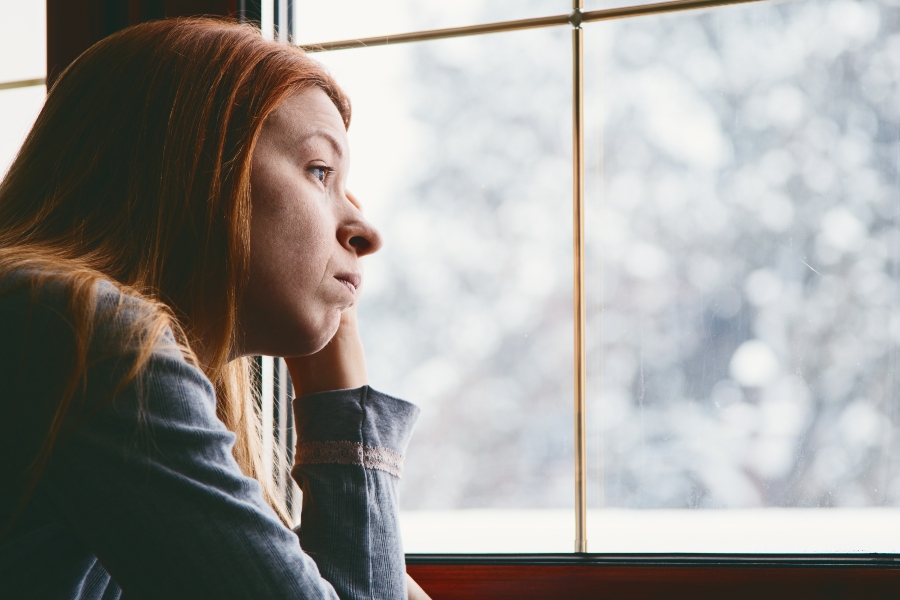
The Battle to Maintain Seasonal Wellness
The Calli InstituteIn an earlier blog, we looked at common symptoms of seasonal affective disorder (SAD) and approached methods of treatment. We wanted to revisit and further examine this topic, since this year has introduced new and unique stressors. Keep reading as we take another look at the battle to maintain season wellness.
A Type of Depression
As its name suggests, SAD is a type of depression experienced with seasonal changes. This usually happens in the shift from fall to winter and is often categorized by an overwhelming sensation of despair.
Those living in areas with fewer hours of sunlight each day are more susceptible to SAD, and the affliction is identified more frequently in women than in men.
Possible Causes
So, what causes SAD? Good question. A specific source is still unknown, but the most popular and valid explanation is reduced available sunlight during winter months. And this makes the most sense based on how sunlight affects the body.
The change in daylight and less of it in the winter throws your internal clock, or circadian rhythms, completely out of sync. This triggers a list of other internal disruptions, including memory, appetite, and sleep cycle.
Reduced sunlight also affects your attitude and emotions, as the body produces less serotonin. This is the hormone that regulates your mood and optimism.
And your lack of energy? That’s probably due to the shorter days and longer nights this time of year. The early darkness tricks your mind into thinking it’s time for bed, which causes the brain to produce more melatonin to help you fall asleep and stay asleep.
So, if you often feel tired, sluggish, and erratic, lack of sunlight could very well be the reason.
Varying Symptoms, Severity
Certain factors may increase a person’s vulnerability to seasonal depression, including:
- Other conditions. People with bipolar disorder or other forms of depression may experience heightened symptoms with the changing season.
- Family history. Someone with a family history of SAD or depression is likely to encounter the same or similar conditions.
- Location. Again, decreased sunlight seemingly contributes to SAD. The farther one gets from the equator, the greater the risk for seasonal depression.
While some symptoms of SAD may seem obvious and look similar – feeling depressed or useless, lack of energy, inability to focus – the severity can vary from person to person. No matter the intensity, these signs should be recognized and addressed so they don’t become more problematic and desperate.
Pandemic Effects
As if common factors of seasonal depression weren’t enough, this year has provided new challenges. Seasonal depression symptoms and cases may be more noticeable and extreme this year because of the added stress from COVID-19. For so many, the effect on mental health is adverse, to say the least.
The coronavirus pandemic changed lives, behaviors, and routines. Many have lost loved ones or are facing financial strains. And the lack of socialization due to safety restrictions delivers a major handicap to those who need support from friends and family right now.
Discovering Hope
This has been a long year. Stress can seem paralyzing, even for those who otherwise enjoy winter. Maintaining focus on seasonal wellness is important. Some things you can do to help manage SAD include:
- Get outside. Go for a walk during your lunch break or on weekends. Curl up on the porch with a blanket and a book. Have an outdoor, socially distanced conversation with a friend or neighbor.
- Stay on schedule. Maintain eating, sleeping, and exercise routines.
- Stay connected. Reach out to family or friends on the phone or with a Zoom chat.
- Be mindful. Practice (or learn) yoga or other forms of meditation to help readjust your thoughts and feelings.
- Talk to a professional. Voice your thoughts to someone who is trained at providing helpful recommendations.
Feeling inexplicably gloomy this time of year is understandable. The day-to-day grind often causes enough stress, but added anxiety from COVID, the cold weather, and the upcoming holidays has many people feeling blue.
Are you experiencing symptoms of SAD? You’re not alone. And talking to someone can help in the battle to maintain seasonal wellness. If you’d like to learn more, reach out to the Calli Institute. Our balanced approach to mental health promotes positivity and is unique to your personal development.
